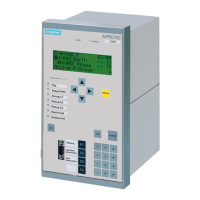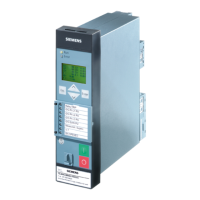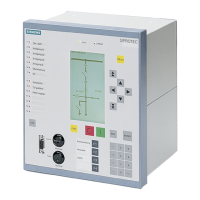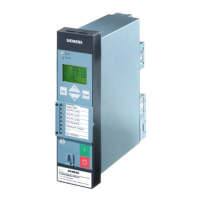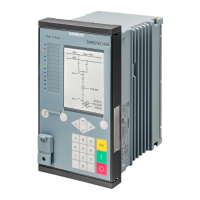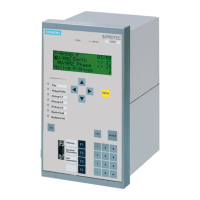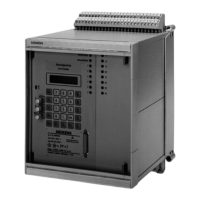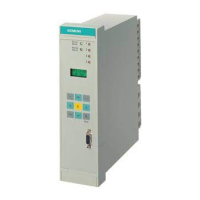The readiness of the circuit breaker is monitored by the device using a binary input
>CB Ready
(FNo. 2730).
•
It is possible to check the status of the circuit breaker before each reclosure or to disable this option
(address 7113, CHECK CB?):
CHECK CB? = No check, deactivates the circuit breaker check,
CHECK CB? = Chk each cycle, to verify the circuit breaker status before each reclosing command.
Checking the status of the circuit breaker is usually recommended. Should the breaker not provide such a
signal, you can disable the circuit breaker check at address 7113 CHECK CB? (No check), as otherwise
auto-reclosure would be impossible.
The status monitoring time CB TIME OUT can be configured at address 7115 if the circuit breaker check
was enabled at address 7113. This time is set slightly higher than the maximum recovery time of the
circuit breaker following reclosure. If the circuit breaker is not ready after the time has expired, reclosing
is omitted and dynamic blocking is initiated. Automatic reclosure thus is blocked.
Time Max. DEAD EXT. serves for monitoring the dead time extension. The extension can be initiated by the
circuit breaker monitoring time CB TIME OUT and by an external synchronism check.
The monitoring time Max. DEAD EXT. is started after the configured dead time has elapsed.
This time must not be shorter than CB TIME OUT. When using the monitoring time CB TIME OUT, the time
Max. DEAD EXT. should be set to a value ≥ CB TIME OUT.
If the automatic reclosure function is operated with an external synchronism check, Max. DEAD EXT.
assures that the automatic reclosure function does not remain in undefined state when the synchronism
check fails to check back..
If the synchronization is used as synchronism check (for synchronous systems), the monitoring time may be
configured quite short, e.g. to some seconds. In this case the synchronizing function merely checks the
synchronism of the power systems. If synchronism prevails it switches in instantaneously, otherwise it will not.
If the synchronization is used for synchronous/asynchronous networks, the monitoring time must grant suffi-
cient time for determining the time for switching in. This depends on the frequency slip of the two subnet-
works. A monitoring time of 100 s should be sufficient to account for most applications for asynchronous
networks.
Generally, the monitoring time should be longer than the maximum duration of the synchronization process
(parameter 6x12).
The breaker failure monitoring time 7114 T-Start MONITOR determines the time between tripping (closing
the trip contact) and opening the circuit breaker (checkback of the CB auxiliary contacts or disappearing device
pickup if no auxiliary contacts are allocated). This time is started each time a tripping operation takes place.
When time has elapsed, the device assumes breaker failure and blocks the automatic reclosure function
dynamically.
Action Time
The action time monitors the time between pickup of the device and trip command of a protective function
configured as starter while the automatic reclosure function is ready but not yet running. A trip command
issued by a protective function configured as starter occurring within the action time will start the automatic
reclosing function. If this time differs from the setting value of T-ACTION (address 7117), the automatic
reclosure function will be blocked dynamically. The trip time of inverse tripping characteristics is considerably
determined by the fault location or fault resistance. The action time prevents reclosing in case of far remote or
high-resistance faults with long tripping time. Trip commands of protective functions which are not config-
ured as starter do not affect the action time.
Delay of Dead Time Start
The dead time start can be delayed by pickup of the binary input message 2754
>79 DT St.Delay
. The
maximum time for this can be parameterized under 7118 T DEAD DELAY. The binary input message must be
deactivated again within this time in order to start the dead time. The exact sequence is described in the func-
tional description at margin heading "Delay of Dead Time Start".
Functions
2.11 Automatic Reclosing System 79
SIPROTEC 4, 7SJ61, Manual 157
C53000-G1140-C210-6, Edition 05.2016
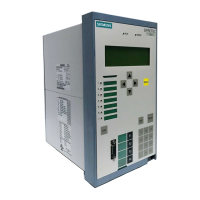
